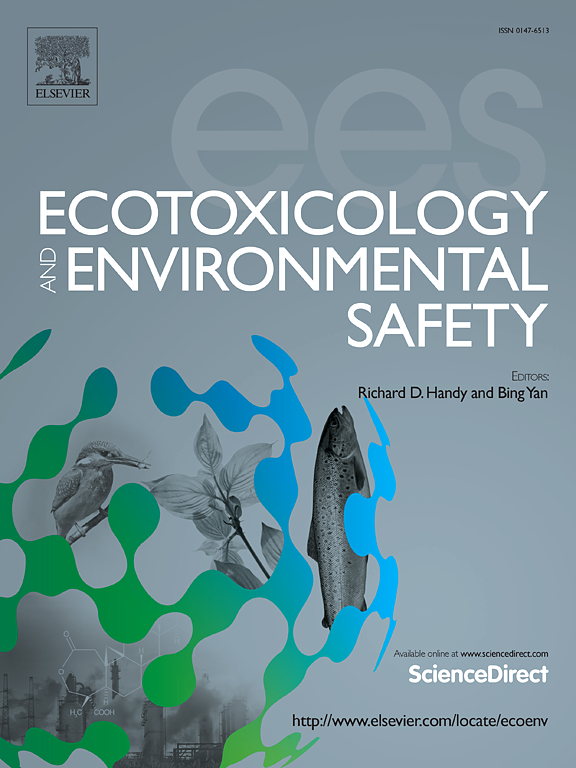Low and high-density polyethylene and expanded polystyrene biodegradation by the greater wax moth Galleria mellonella L reveals a key role of the gut microbiome.
IF 6.2
2区 环境科学与生态学
Q1 ENVIRONMENTAL SCIENCES
引用次数: 0
Abstract
Polyethylene (PE) is a ubiquitous pollutant that takes long time to degrade naturally. PE breaks down into persistent micro- or nano-plastics that are even more dangerous for the environment and human health. Here we investigated the ability of the wax worm Galleria mellonella (Lepidoptera, Pyralidae) to degrade two different types of PE and expanded polystyrene (EPS). Results showed a reduction of up to 69 %, 73 %, and 50 % in the weight of LDPE, HDPE, and EPS, respectively. Antibiotic treatments indicated that PE consumption is highly dependent upon an intact population of at least eight different bacteria from the Enterococcus, Pseudomonas, and Bacillus genera identified by 16S rRNA sequencing. Antibiotic treatment reduced the gut bacterial population, negatively affecting larval growth. The PE-only diet severely affected the growth and development of G. mellonella larvae, pupae, and male/female adults. SEM analysis of gut bacteria co-incubated LDPE discs revealed biofilm formation and PE biodegradation by all the bacteria in the culture, supporting the great potential of these bacteria for plastic biodegradation. FTIR analysis of frass after feeding on PE only revealed significantly strong PE biodegradation signals as results showed 33 peaks of strong (S) and medium (M) intensity corresponding to wave numbers with PE biodegradation signatures ranging between 1239.50 cm−1 to 3077.69 cm−1 coding for vinyl hydrocarbons, vinyl ether, vinylene, vinylene trisubst., ketones, ethers, aldehydes, acrylate, diazo ketones and epoxides which is a convincing evidence of PE metabolism. Further research is required to determine the practical implications of wax worm larvae for plastic degradation in the environment.
求助全文
约1分钟内获得全文
求助全文
来源期刊
CiteScore
12.10
自引率
5.90%
发文量
1234
审稿时长
88 days
期刊介绍:
Ecotoxicology and Environmental Safety is a multi-disciplinary journal that focuses on understanding the exposure and effects of environmental contamination on organisms including human health. The scope of the journal covers three main themes. The topics within these themes, indicated below, include (but are not limited to) the following: Ecotoxicology、Environmental Chemistry、Environmental Safety etc.

 求助内容:
求助内容: 应助结果提醒方式:
应助结果提醒方式:


